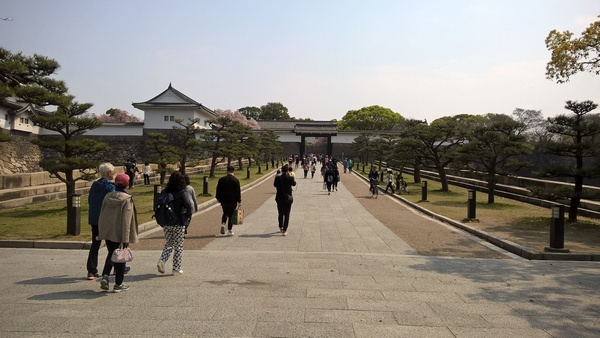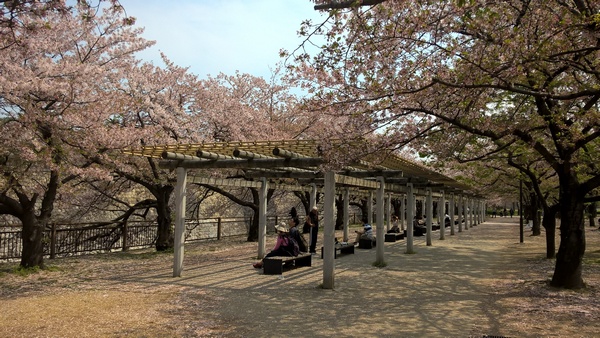
Jason A. Baguia
HAVING come from a metropolis where talk of development rarely envisions more parks than the three low-maintenance patches of earth we make do with, I experienced Japan’s Osaka Castle Park as a generous treat.
The sprawl of forests, gardens, paths and lakes surrounding the castle on the southern banks of the Okawa River is a refreshing communal space.
Central to Japan’s second largest city after Tokyo, the park drew me more than I went to it. I found myself cycling there for the first time
after a failed search for Osaka’s Catholic cathedral on Maundy Thursday.
Day was drawing to a close as I pushed pedals by Okawa. The river, to my left, glowed. Its linings, dozens of sakura or cherry blossom trees stood resplendent as their lush, pinkish white flowers reflected the saffron of our star.
The castle rested on a rise, bright like a lighthouse. Its interior and façade lighting had been configured to evoke the city’s evening colors.
Then as in my later visits, the castle was an emblem of tranquility, devoid of any trace of having figured in man-made and natural upheavals.
A Lion’s Club marker summarized part of the park’s history. Way back in the 16th century, it was the site of the home of Hideyoshi Toyotomi.
He was a daimyo or feudal lord during Japan’s Age of Warring States who was eventually recognized as one of the country’s great unifiers.
But the area’s story stretches farther back in time.
Before becoming Toyotomi’s stronghold, it was the location of a temple administered by the Ikko.
This was a Buddhist confession some of whose warrior-monks fought the rule of military nobles or samurai.

HISTORIC PORTAL. This gate leads visitors in the Osaka
Castle courtyards. Jason A. Baguia
The temple, established in 1496 was itself built above the ruins of the imperial palace.
When the warrior-monks and their comrades in arms ended their revolt, the temple was razed. Afterwards, Toyotomi had the
castle built.
In the Summer War between the Toyotomis and Tokugawas, the former lost. The castle was gutted by fire. Refashioned in 1629, Osaka Castle was ruined by lightning almost four decades later.
The main tower that I beheld had been restored in 1931—when the area opened to the public as Osaka Castle Park—using donations from locals.
I was fortunate to see it when it was not only past its phase as a locus of conflict but also played lodestar to life’s serene flourishing.
As night set in, incandescent lamps illuminated the castle grounds, casting on the cherry blossom trees half-lights enchanting enough to provoke thoughts of fairies and elves.

FLOWER WATCHING. Visitors rest in the shade of flowering cherry blossoms by Osaka Castle’s southern moat. Jason A. Baguia
The park was alive with Japanese and visiting cyclists and runners blazing through their allotted paths. Families and friends sat on blue mats beneath the fragrant cherry blossoms for hanami or flower-watching that in practice is a picnic.
For those without provisions, vendors offered delicacies such as barbecued squid or big balls of hot, aromatic takoyaki–a flour-based batter stuffed with spices and diced octopus–at around 500 yen per serving.
“More than half a century has passed since the rebirth of Osaka Castle and Osaka Castle Park,” the Lion’s Club sign read. “It is enjoyed, in great popularity, among the citizens of Osaka as a rich source of greenery and a treasure of local history.”
I felt that the park also invited me to a daytime exploration so I came back a week later on Wednesday morning, the fourth of April and the fourth day of Easter.
The day was mildly misty, softening the sun. Busloads of tourists filed into the park through its southern entrance. A light breeze blew, driving the sakura to laughter and to shedding petals that fell like a slow-motion snowfall to the ground.
This is how these trees have for many peaceful years welcomed with pastel pavements Osaka’s springtime travelers.



